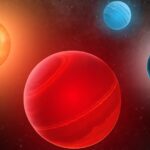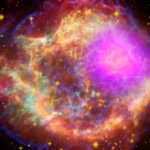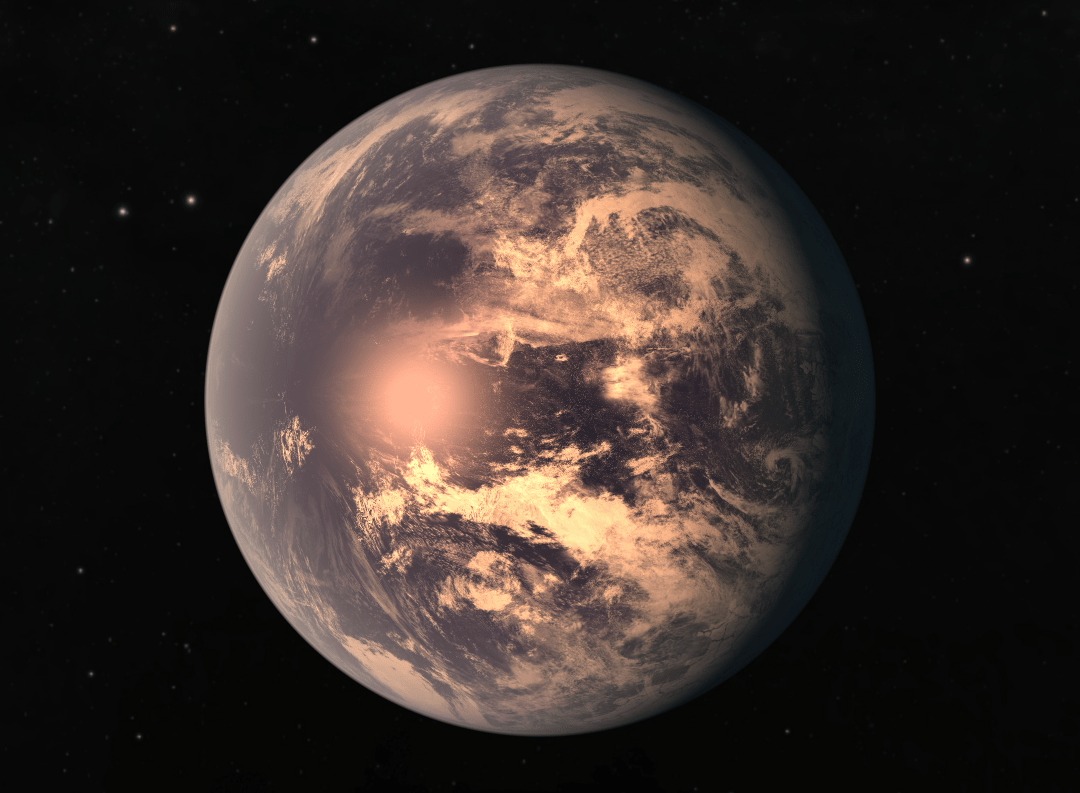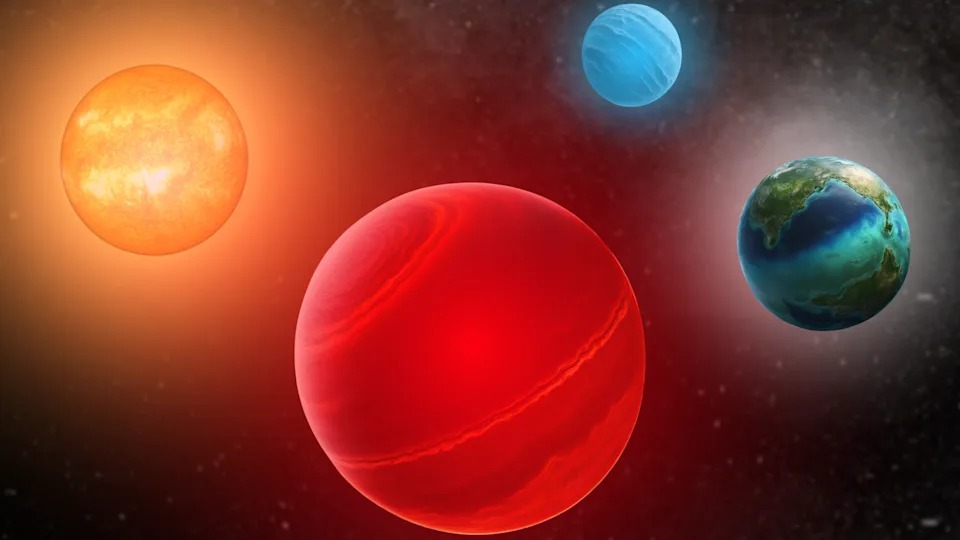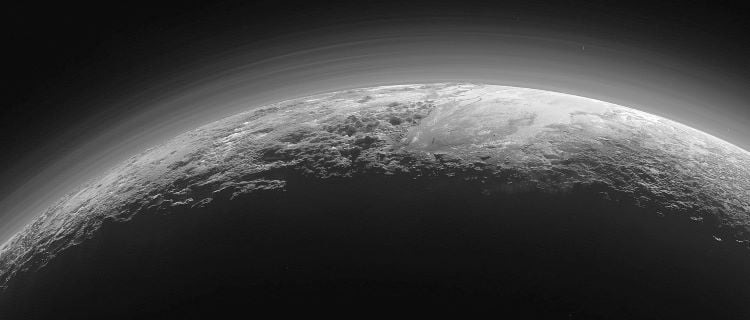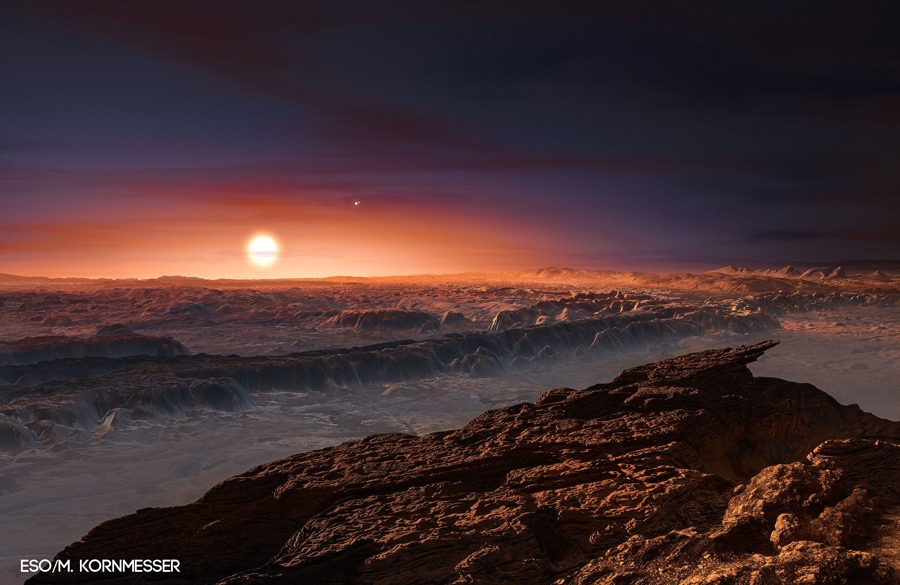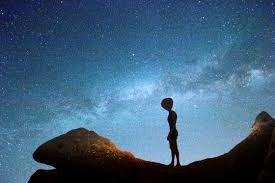The search for alien life is one of the biggest and most exciting quests in all of science. For a long time, we didn’t know where to look. But in recent years, we have found a special star system that has become a top candidate for finding life, a place that many scientists believe is our best hope.
This amazing system is called TRAPPIST-1. It’s a star that is very different from our Sun, and it has not just one, but seven planets that are similar in size to Earth. The planets are all packed very close together, and many of them are in the perfect place to have liquid water. This article will take a deep dive into the TRAPPIST-1 system, exploring its unique features and the reasons why scientists are so excited about it. We will also look at the new discoveries being made by the James Webb Space Telescope and the challenges that life might face in this distant system.
What Is the TRAPPIST-1 System? A Star with Seven Worlds
The TRAPPIST-1 system is located about 40 light-years away from Earth, in a part of the sky that is called the constellation Aquarius. This is not a star you can see with your eyes; it is very dim and small. TRAPPIST-1 is what scientists call a red dwarf star. It is much, much smaller and cooler than our Sun. It is only a little bit bigger than the planet Jupiter, and its mass is only about 9% of our Sun’s mass.
Because the star is so small and cool, its planets have to be very close to it to stay warm. And that is exactly what we have found. The TRAPPIST-1 system is an amazing place with seven planets that are all packed in very close to their star. The planets are so close that if you were standing on one of them, you would be able to see the other planets in the sky, and they would look much bigger than our Moon looks to us.
The Seven Planets: A Family of Worlds
The seven planets of the TRAPPIST-1 system are named TRAPPIST-1b, 1c, 1d, 1e, 1f, 1g, and 1h. They are all very close to each other, and they all orbit the star in a short amount of time. The closest planet, TRAPPIST-1b, completes a full orbit in just 1.5 Earth days. The farthest planet, TRAPPIST-1h, takes about 19 Earth days to go around the star.
All of the planets are believed to be rocky, and many of them are about the same size as Earth. Their orbits are very flat and organized, which makes the whole system a perfect subject for scientists to study. The planets are so close to each other that they pull on each other with their gravity, which helps scientists learn a lot about their mass and their density. This is a very interesting feature of the system, and it has helped us learn a lot about what the planets might be made of. The densities of the seven planets are all similar, suggesting they have similar interiors, though with less iron than Earth.
The Goldilocks Zone: A Recipe for Life
As we discussed before, the search for life is all about finding liquid water. This is why the habitable zone, or “Goldilocks Zone,” is so important. A planet in this zone is in the perfect place to have liquid water on its surface.
The TRAPPIST-1 system is so exciting because three of its seven planets are in this habitable zone. These planets are TRAPPIST-1e, TRAPPIST-1f, and TRAPPIST-1g. These planets are getting just the right amount of light and heat from their star to have liquid water on their surface. This makes them prime candidates for the presence of life as we know it. While we don’t know for sure if these planets have water, the fact that there are three of them in the perfect zone in one system is an incredible discovery.
Why Are They Our “Best Hope”? The Perfect Setup
The TRAPPIST-1 system is not just a place with a few planets in the habitable zone. It is a perfect cosmic laboratory for finding life.
- Close and Easy to Study: The system is relatively close to us, which means that with powerful telescopes, we can study it in great detail. The planets also pass in front of their star very often. This makes them easy to study with the transit method, which we can use to learn about their atmospheres.
- Tidal Locking and the “Terminator Zone”: Because the planets are so close to their star, they are believed to be tidally locked. This means that one side of the planet is always facing the star, and the other side is always in the dark. The side facing the star would be very hot, and the side facing away would be very cold. This might seem like a bad place for life, but scientists believe there could be a special “twilight” zone in between the hot side and the cold side where the temperature is just right for liquid water. This zone, called the “terminator zone,” could be the perfect place for life to exist.
What We’ve Learned: New Clues from the James Webb
The James Webb Space Telescope (JWST) has given us our best look yet at the TRAPPIST-1 system. It has been studying the atmospheres of these planets, and the results have been both exciting and challenging. The James Webb has been able to measure the heat of some of the planets, which has given us clues about whether they have an atmosphere.
Recent studies of TRAPPIST-1b and 1c, the innermost planets, showed that they likely do not have thick atmospheres like Earth. This is not a surprise, as they are very close to their star and are likely to have had their atmospheres stripped away by the star’s powerful flares. But the James Webb is still studying the other planets in the system, and we are hoping to find signs of an atmosphere and, one day, biosignatures.
The Challenges of Life on TRAPPIST-1
While the TRAPPIST-1 system is our best hope, it is also a very difficult place for life to exist. The star is a very active red dwarf, which can have a lot of powerful flares that could be very harmful to any life on its planets. These flares could strip the atmospheres off of the planets, and they could also be a huge source of radiation. Any life on these planets would have to find a way to adapt to this very active star.
Despite these challenges, the TRAPPIST-1 system is still one of the most exciting places in the universe. It is a perfect cosmic laboratory for us to test our ideas about where life can exist, and it is a place that we will continue to study with great hope.
Conclusion
The TRAPPIST-1 system is a truly remarkable place. It is a star that has a family of seven planets, many of which are similar in size to Earth. The fact that three of these planets are in the habitable zone makes them a top candidate for finding alien life. The system’s proximity to us and its perfect setup for observation make it a great place to use powerful telescopes like the James Webb to search for atmospheres and biosignatures. While the challenges for life are great, the promise of finding another world with life on it is even greater.


